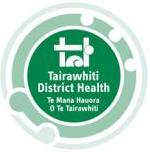
Sponsor: Mental Health Clinical Governance Group
Name: Personal Restraint
ORGANISATIONAL
POLICY
PERSONAL RESTRAINT
AUTHORITATIVE SOURCE
Mental Health Sector Standards, Standards NZ & MOH, 8134:2008
SCOPE
All staff working within Mental Health and Addictions Services
POLICY STATEMENT
To provide a frame work for the use of restraint to ensure that the use of this intervention
within Te Whare Awhiora is limited and if used, this practice is in line with Health and
Disability Sector Standards.
DEFINITIONS
Personal Restraint
This is an approved, skilled intervention by Personal Restraint educated to staff to prevent
individuals from harming themselves or endangering others. This does not include the use
of mechanical restraint devices
Personal restraint should be used as a last resort and only after techniques to de-escalate
with the individual have been attempted. This may include diversion, changing the
environment, sensory modulation techniques, providing structure through an activity,
directing service users, utilising specific resources for support of service users (advocacy,
family, cultural)
Personal Restraint Instructor
Is certificated by another Personal Restraint Instructor and attends an annual course
provided by a certified personal restraint instructor/s.
Personal Restraint Education
Use of skilled interventions by staff certificated by Personal Restraint Instructors
Author: Mental Health & Addictions Policy Review Group
Date of first approval: April 2000
Authorised By: Clinical Director / Clinical Care Manager
Date of last review: August 2015
Page
1 of
8
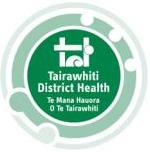
Sponsor: Mental Health Clinical Governance Group
Name: Personal Restraint
RELATED STANDARDS AND PROCEDURES
Seclusion Policy
Model of Care Te Whare Awhiora
Sensory Modulation Policy
Terms of Reference Restraint Committee
1.
Calming
a)
Calming/defusing skills, de-escalation techniques and effective communication are
the first approach in managing service users who are experiencing increased
anxieties/mental distress disturbances safely.
b)
Calming and de-escalation techniques effectively promote safe skills for staff in:
communication/effectiveness, support / empathy, cultural / gender / age sensitivity,
defusing skills, de-escalation techniques, mediating / negotiating skills, environmental
management, sensory modulation and environmental adjustment.
c)
Personal Restraint certificated staff will be skilled in being able to assess any given
situation of the heightened arousal cycle, and seek help if and when appropriate.
d)
Knowledge in defusing / communication skills and de-escalation techniques can
enable service users to maintain self-control and maintain their dignity.
e)
Service user’s dignity, respect, cultural considerations and gender / age must be
acknowledged and taken into consideration at all times. E.g. minimise barriers to
effect positive outcomes for service users
2.
Restraint
a)
Staff are to use personal restraint in a safe, effective and appropriate way, which will
maintain service users, dignity, safety and legal requirements.
b)
All personal restraint techniques should only be used by staff that are currently
certificated and have attended an update every 2 years or sooner as directed by
Personal Restraint Instructors.
c)
All staff will be cognisant of legal implication in their practice regarding collection of
information and sharing information related to personal restraint and seclusion
practices and audits.
3.
Decision to initiate personal restraint
3.1
The following are situations where the use of personal restraint maybe
considered appropriate:
a) When a person is making a serious and determined attempt or act of self-harm and is
unable to stop of his or her own volition.
b)
When a person makes a serious or sustained attack on another person.
c)
When a person damages the environment in such a way that a real danger is
created to her/him or others.
Author: Mental Health & Addictions Policy Review Group
Date of first approval: April 2000
Authorised By: Clinical Director / Clinical Care Manager
Date of last review: August 2015
Page
2 of
8
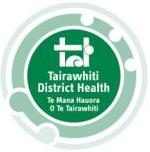
Sponsor: Mental Health Clinical Governance Group
Name: Personal Restraint
d)
When all other interventions fail and it is necessary to give an essential treatment
to someone who is under the compulsory care, assessment/treatment MH Act.
E.g. resisting accepting medication
e)
When it is necessary to prevent a person at high risk of severe self-harm or danger to
others.
f) When using restraint it is necessary to detain a person under Section 110 and 111 of
the Mental Health (Compulsory Assessment and Treatment) Act if the individual is
resistant to care, assessment and treatment and is informal at the time
of
using
personal restraint.
3.2
Situations when restraint should not be used includes:
a)
When a person is in possession of, or suspected to be in possession of a weapon
(object which can wound or kill) they should not be approached, staff and others
should retreat to a safe place and Police must be alerted immediately.
b)
When its use would compromise the safety of service users.
c)
Informal service users unless Section 111 of the Mental Health Act is being
invoked
3.3
Before initiating a personal restraint, the nursing team will ensure that
:
a) The degree of urgency and danger is sufficient to warrant using restraint.
b)
A range of calming techniques is used first (except when very urgent action is
needed to prevent injury).
c)
All possible alternative interventions have been used to manage the situation.
d)
Whenever possible cultural support has been called to assist in using cultural
calming techniques. E.g. use of Te Reo Maori, Korero, and Karakia.
e)
Staff have followed recommendations in service users management and nursing care
plan, including cultural and gender appropriate measure where indicated.
f)
There are no contra-indications present.
g)
The desired outcomes of the restraint are planned and are clinically sound.
h)
Criteria is in place for ending the restraint once it has commenced.
3.4
In the event of restraint the following need to be adhered to
a)
At all times service users dignity, respect and cultural, gender/age considerations
must be acknowledged. E.g. minimising the intrusion on an individual’s privacy
and/or threats to self-respect.
b)
Service users must be continually informed throughout the process.
c)
Always maintain safety of neck, airway, mouth, nose, genitalia, breasts, abdominal
areas, lower back or circulation.
d)
Always consider the contra-indications for use of personal restraint i.e. when it would
threaten the well-being of the individual.
e)
When the individual is in possession of a weapon, involve Police immediately and
exit staff and others from the immediate vicinity
Author: Mental Health & Addictions Policy Review Group
Date of first approval: April 2000
Authorised By: Clinical Director / Clinical Care Manager
Date of last review: August 2015
Page
3 of
8
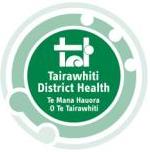
Sponsor: Mental Health Clinical Governance Group
Name: Personal Restraint
3.5
Applying personal restraint
a)
Staff involved in personal restraint must be approved and their practice current.
b)
Full and partial restraint requires three trained staff members
c)
In a situation where there are insufficient trained staff members available to carry out
the procedure, help should be sought from security.
d)
In situations involving weapons or in emergencies when there is insufficient staff on
duty to manage the situation, the Police must be called.
e)
All mental health staff are expected to assist the restraint team if necessary e.g.
opening doors, attending to other service users.
3.6
Prolonged Restraint
In the very rare event when restraint is prolonged, it is because it is the best option for
service user’s safety. For example, it might be used:
a)
For a person who needs intra-venous fluids to maintain life, is highly resistant to any
form of treatment and is unable to be sedated.
b)
For an extremely self-harmful person, unable to be calmed by medicine, who would
inflict self-injury in seclusion.
In prolonged restraint the following procedure must be followed:
a)
The permission of service users Responsible Clinician (or the on call Responsible
Clinician after hours) is required for restraint continuing beyond two hours.
b)
The Clinical Director of the service and the Director of Area Mental Health
Services should be informed directly in writing by the Responsible Clinician and a
written report forwarded to them each shift for as long as the restraint is imposed.
c)
Observations, care and communication continue as for any restraint. In addition:
carry out a full range of motion on restrained limbs at least every half hour. If the
restraint exceeds eight hours, call the duty medical officer to conduct a complete
physical examination. Complete 15-minute checks of the physical and emotional
health status of all people involved. Rotate staff applying restraint every half hour to
alleviate fatigue.
3.7
Ending Restraint
a)
This must be done in a planned controlled manner when the outcomes for
restraint have been achieved, or when service user’s safety is compromised by the
restraint.
b)
Where advisable or considered a safe option, one or two staff members should
remain with service user to reassure him/her, and to provide ongoing assessment
and support.
c)
Whenever restraint is used Personal Restraint certificated staff involved will receive
critical incident debriefing within 24 hours of the incident and is documented.
d)
Service users must receive debriefing from staff and this is documented in the clinical
notes. Service users should also be offered the opportunity to de fuse with staff from
the advocacy service.
Author: Mental Health & Addictions Policy Review Group
Date of first approval: April 2000
Authorised By: Clinical Director / Clinical Care Manager
Date of last review: August 2015
Page
4 of
8

Sponsor: Mental Health Clinical Governance Group
Name: Personal Restraint
3.8
Support following restraint
a) A unit based support (defusing) meeting will be held with the restraint team and the
co-ordinator immediately following the incident.
b)
If requested by staff, a Critical Incident Stress Management debriefing will be
arranged by the Shift Coordinator within 24 hours.
c)
Support for the service user, and any other service users(s) who may feel
disturbed by the event, will be provided by unit staff. Further support may be
requested from a service user advocate, consumer support/liaison, whanau/family
or significant others.
3.9
Follow up Actions
Following personal restraint the following must be undertaken:
a)
Record names of staff involved in the restraint in the restraint record.
b)
Give a summary of the conclusions from the post restraint review.
c)
Record and describe any injury to service user, staff member or other.
d)
Ensure that service users receive appropriate medical treatment and outcomes are
documented in their notes.
e)
Responsible Clinician and/or on-call psychiatrist to be informed.
f)
Organisation incident form to be reviewed documented and completed.
g)
The Personal Restraint Educators/Facilitator will review each form, and if injury to
staff occurs, TDH Occupational Health Nurse needs to be contacted and reported to
Health & Safety.
4.
Personal Restraint – Education
4.1
Training Records
The Personal Restraint Instructors will maintain a register of all training/education
related to Personal Restraint and Maintaining Personal Safety. The Personal
Restraint Instructors will inform staff members and their Service Managers when they
are due to attend their annual update. Personal Restraint instructors will maintain a
register of approved trainers and trainees
4.2
Planning and Organisation of Personal Restraint Education
a) Management will ensure that Mental Health Addiction Services personal restraint
techniques and education are within the national guidelines and evidenced based.
b)
Personal Restraint Education will be planned and organised by Personal Restraint
instructors.
4.3
Instructors
a) There will be a minimum of two certified educators in the Mental Health & Addiction
Services.
b)
Instructors will be required to review and update their practice as new developments
in this area occur.
Author: Mental Health & Addictions Policy Review Group
Date of first approval: April 2000
Authorised By: Clinical Director / Clinical Care Manager
Date of last review: August 2015
Page
5 of
8

Sponsor: Mental Health Clinical Governance Group
Name: Personal Restraint
4.4
Requirements and Content of training
a) All nursing staff and other collaborative team members who work in MH&AS
including security will be required to attend an approved Personal Restraint
programme within six months of commencing work for the MH&AS.
b)
Personal Restraint education must be updated bi annually.
c)
Where a staff member’s personal restraint techniques are evaluated as unsafe, they
will be directed by their service manager to complete an update within a month.
d)
Communication and De-escalation training is incorporated into the personal
restraint course. Its aim is to reduce the need for personal restraint by increasing staff
skills in: Risk assessment, De-escalation and defusing, negotiating skills, Mediating
skills, and Environmental management.
e)
All MH&AS employees in contact with service users will be provided with training in
breakaways/approved low risk self-defence techniques as well as
communication and de-escalation skills by TDH Organisation De-escalation approved
workshops annually. Attendance and participation is mandatory.
f)
A Personal Restraint Certificate will be provided for all staff members who
complete the training programme.
5.
Evaluation and Audit
5.1
Audit
All incidents of personal restraint will be reviewed.
a)
At the end of the defusing procedure, the shift co-ordinator on duty and Personal
Restraint team will evaluate the restraint event with regard to its necessity, safety
and efficacy.
b)
Input will be sought at a suitable time from the service users and/or their advocate.
c)
When service users are restrained, they should be involved in the review whenever
possible.
d)
This review must be documented in the Personal Restraint Register.
5.2
Organisational Evaluation
Personal restraint data provided on personal restraint/patient forms is available to
the Personal Restraint Educators, RC, DAMHS, Group Manager and Service
Manager of Acute Mental Health who will audit the personal restraint register
each month.
a)
The Personal Restraint Register is to be completed each time personal restraint is
used.
b)
There will be a 2/12 monthly reviews and audit of this register and corresponding
incident forms at the Seclusion and Restraint, Advisory Committee Meeting. This
review will include:
Type of personal restraint used, did it achieve its objectives
Appropriateness of use of the restraining and consideration of other treatment
options, injury to any party.
Recommendations audited for improving the practice of personal restraint.
It will be the responsibility of the Seclusion and Restraint, Advisory Committee
Meeting to oversee the evaluation process.
Author: Mental Health & Addictions Policy Review Group
Date of first approval: April 2000
Authorised By: Clinical Director / Clinical Care Manager
Date of last review: August 2015
Page
6 of
8
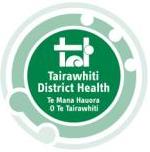
Sponsor: Mental Health Clinical Governance Group
Name: Personal Restraint
Minutes of the Mental Health Seclusion and Restraint Advisory Committee will be
forwarded and tabled at the Organisational Restraint Minimisation Committee
5.3
Use of Force
Use of Force Definition:
The use of such force as is necessary in an emergency to either retake or detain a
person, proposed patient or patient, or enter premises, or treat a patient.
Use of Force by Inpatient Staff
The following must be documented in Restraint Register and clinical notes
When force implemented:
Name of Patient
NHI number
Date
Time
Duration of force
Type of force used
Reason
Who was present
Authorising health professional
Use of Force: Duly Authorised Officers and/or Responsible Clinicians
Must document use of force details on Use of Force form provided by DAMHS
Details to include:
Name of Patient
NHI Number
Time
Date
Reason
Who was present
Authorising Health profession
When use of force or restraint methods are used debriefing procedures for
counsellors, staff and/or others must be reported and documented in patient’s clinical
notes and communications book.
Use of Force when requested by Inpatient staff to Police
Senior Nurse in charge- Must report and document reasons why a request has been
made for police attendance:
Must inform:
Service Manager- Acute mental health services
Responsible clinician
If after hours, weekends, public holidays
On call psychiatrist.
PATT
Author: Mental Health & Addictions Policy Review Group
Date of first approval: April 2000
Authorised By: Clinical Director / Clinical Care Manager
Date of last review: August 2015
Page
7 of
8
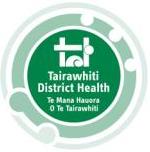
Sponsor: Mental Health Clinical Governance Group
Name: Personal Restraint
Care plans and risk management plans to be updated and reflect outcomes from
Police intervention and recommendations to eliminate further risk of involving Police.
Use of Personal Restraint or Seclusion or Use of Force outcomes must be reported
and documented accordingly.
Evidence of preventing the use of Police, methods or restraint or use of force must be
reflected in all plans including documented evidence of MDT participation and with
Keyworkers, CMH staff, others, NGO sector and whanau/families.
Date of Approval: September 2015
Next Review Date: September 2018
Author: Mental Health & Addictions Policy Review Group
Date of first approval: April 2000
Authorised By: Clinical Director / Clinical Care Manager
Date of last review: August 2015
Page
8 of
8







